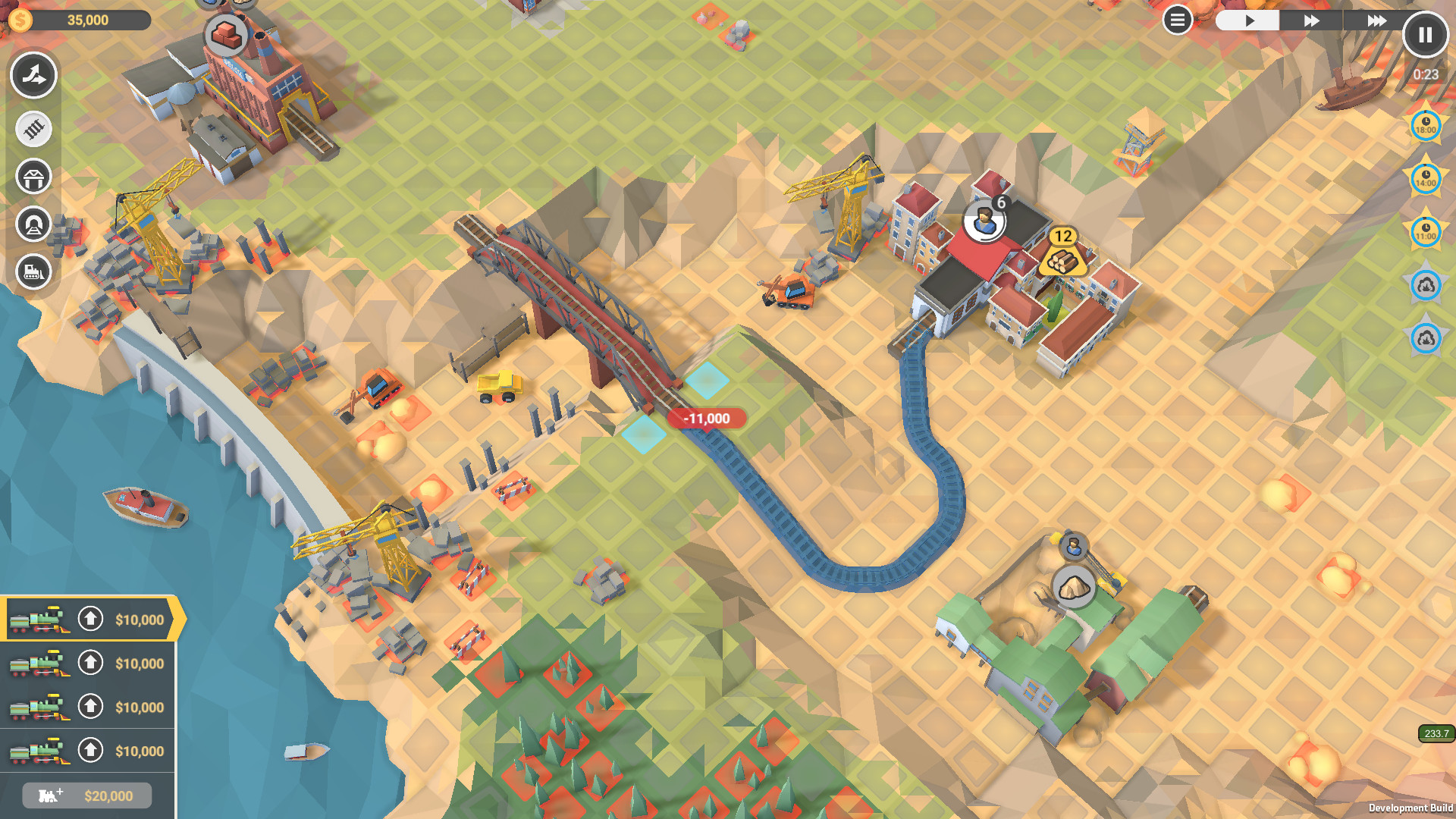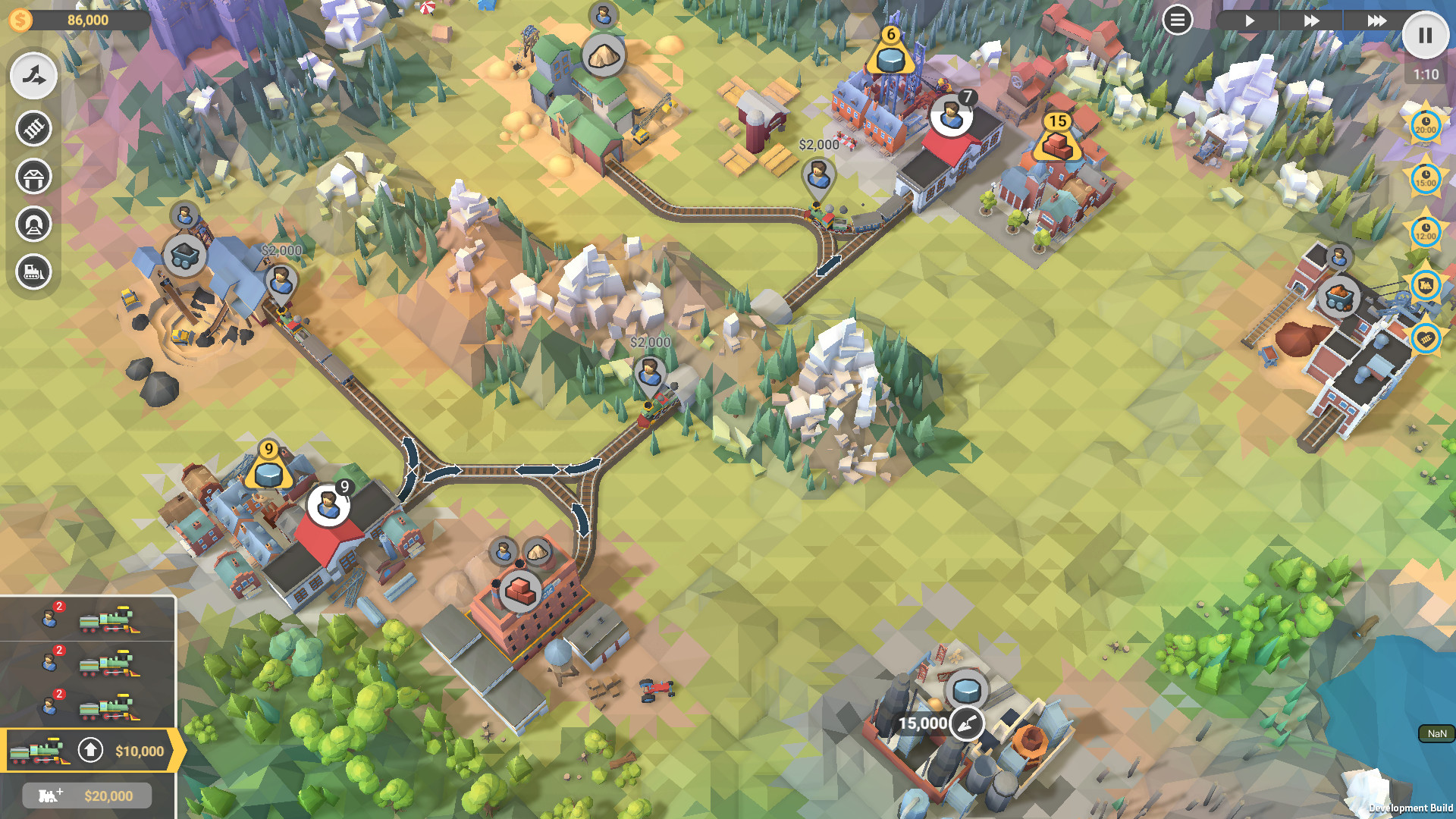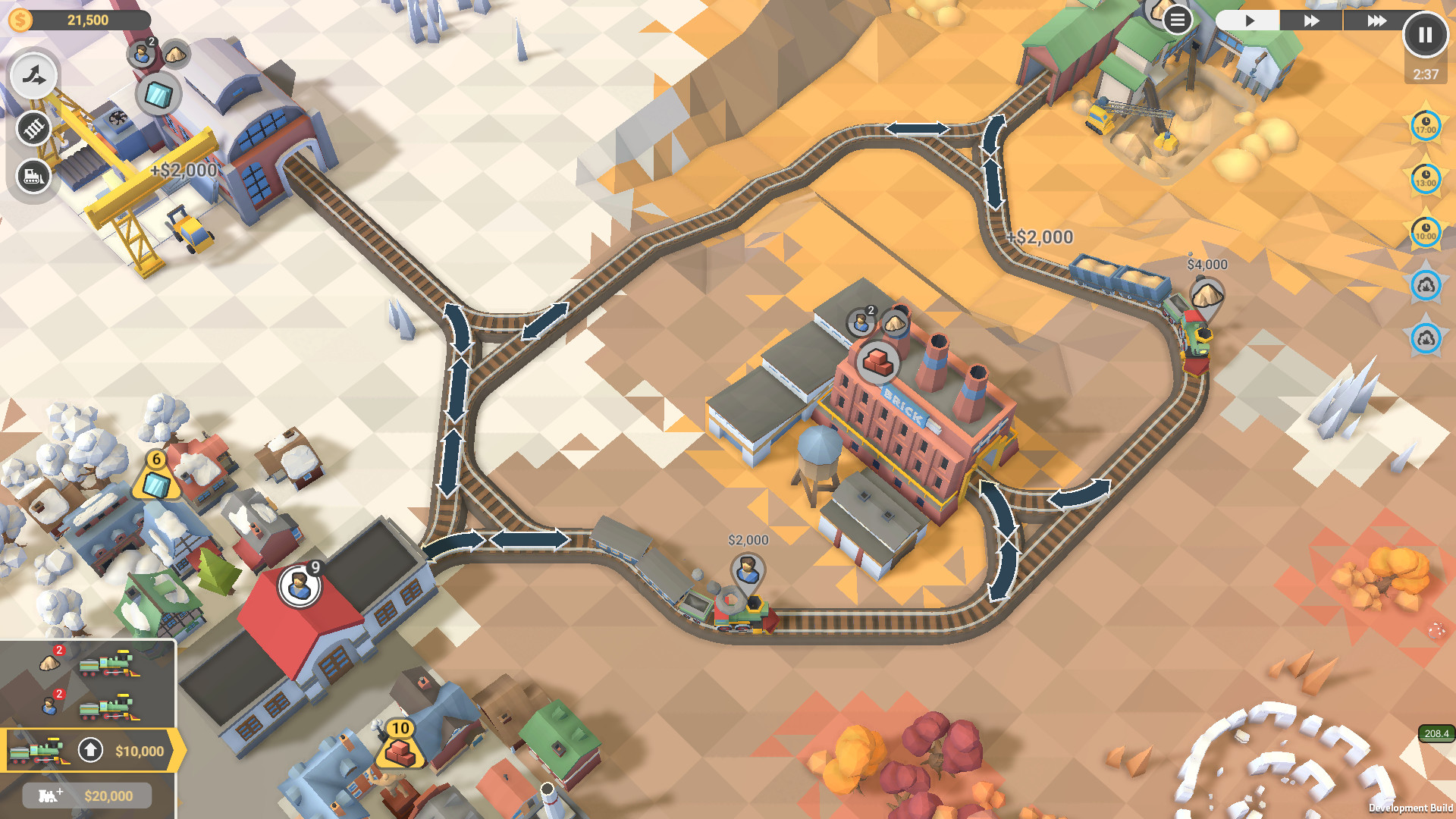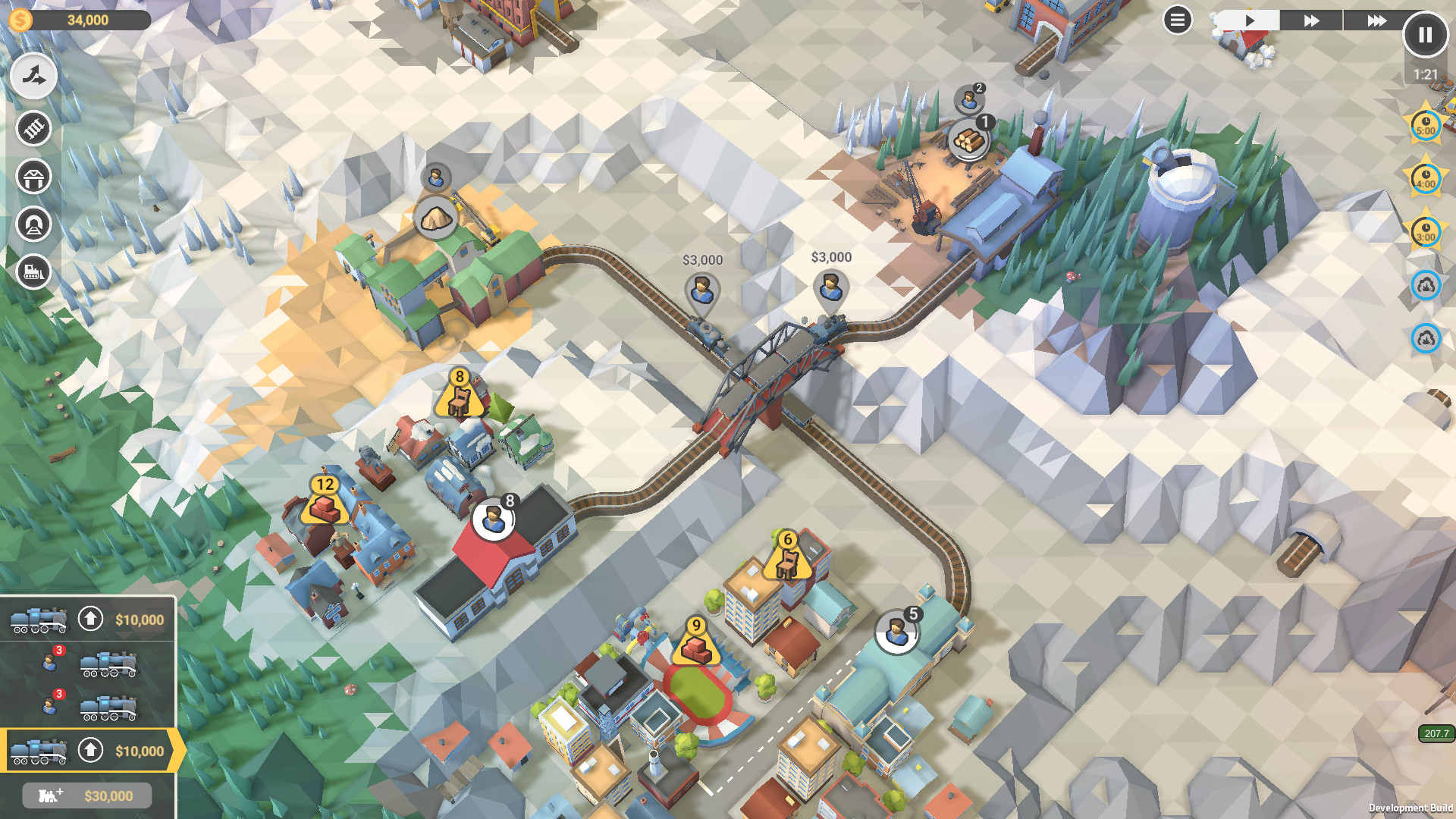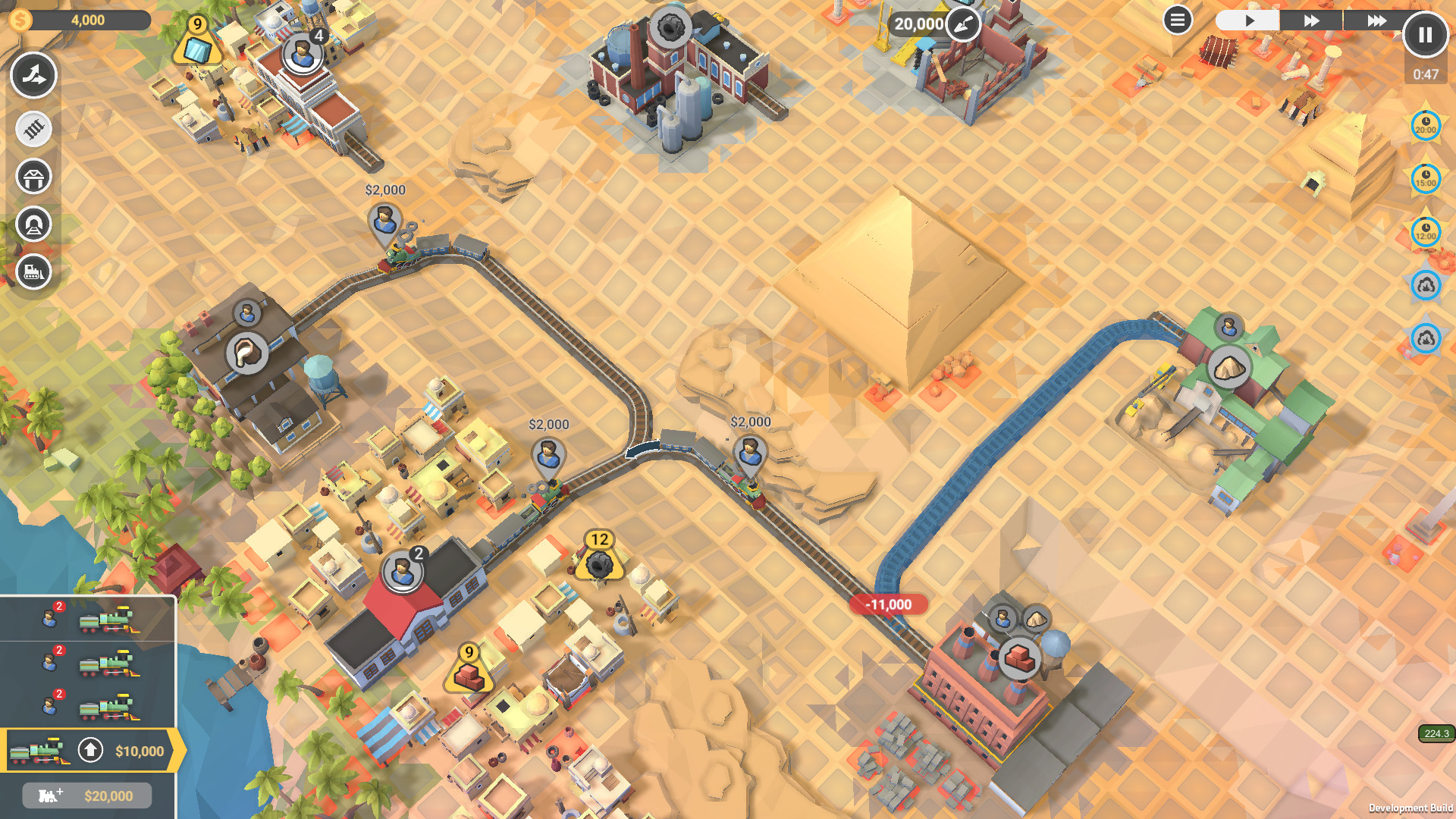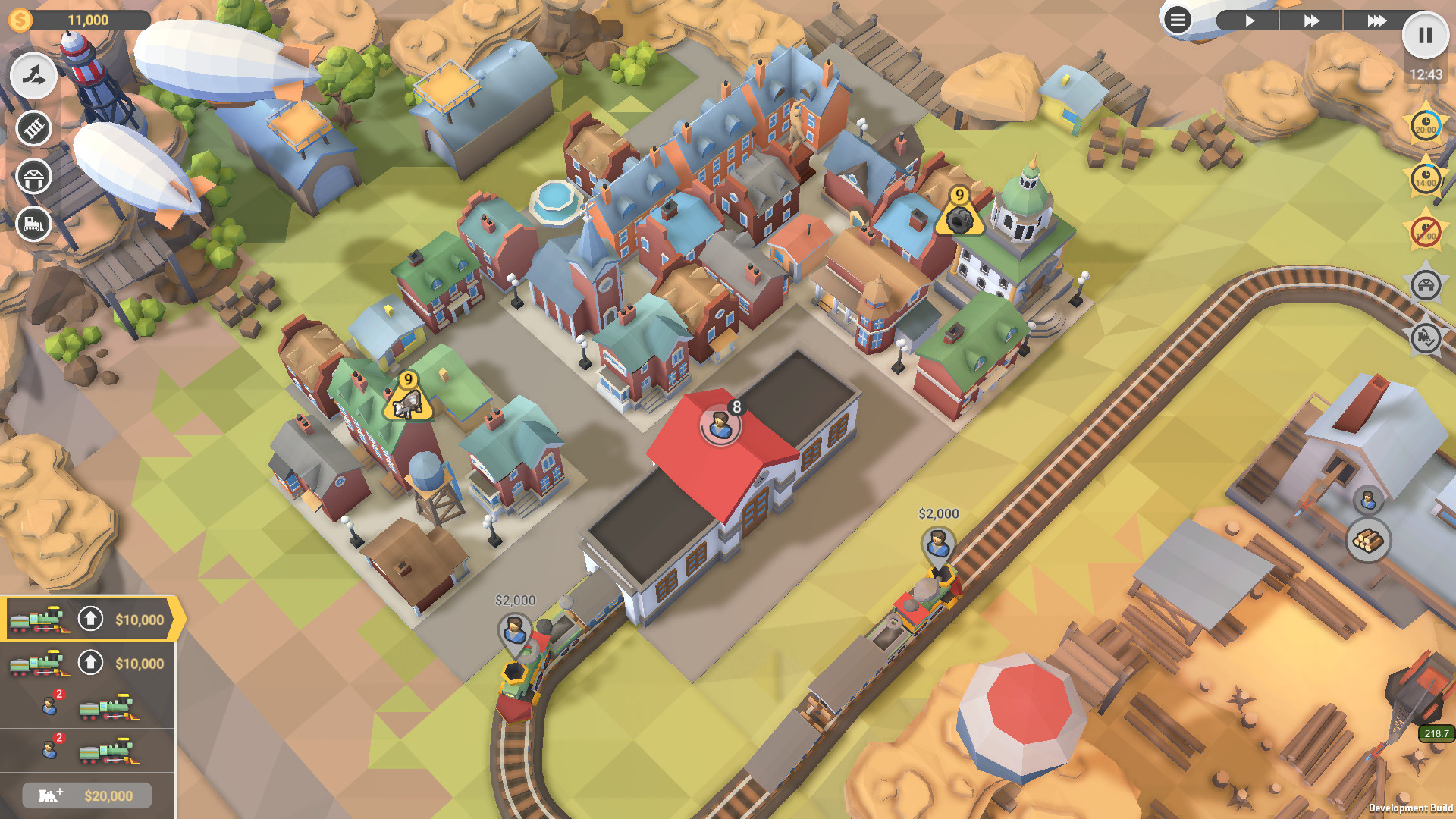
Enjoy engaging and addictive gameplay, combining puzzle micromanagement with tycoon elements.

Discover the history of railroads in elegant low-poly graphics!

Keep your trains running on schedule across 50 levels in Company Mode (*the Early Access version currently offers 20).

Upgrade your stock of locomotives and acquire advanced engines, with 18 models to unlock (*the Early Access version currently features 4).

Produce and ship increasingly sophisticated goods in more than 35 types of train cars (*the Early Access version currently offers 21).

Jump into our Level Editor with Steam Workshop integration and create your own Valleys - or play levels from other players!

Create your own mods with custom locomotives, train cars, industries, and resources from your favorite time or universe.
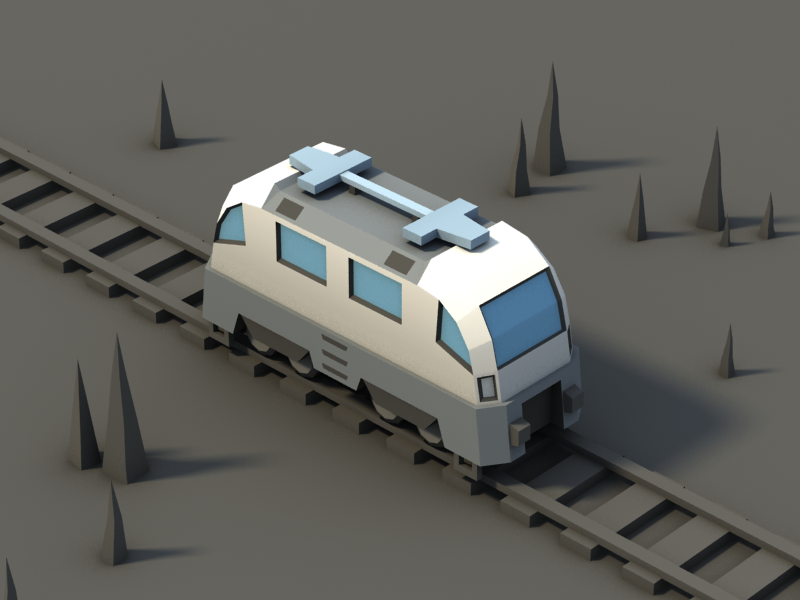 Good day, train lovers! Its been a truly exciting week for us since Train Valley 2 departed from Full Release Station, but it was but another stop. The journey continues: today we resume our trip through the history of locomotives... which is, actually, also about to reach its final destination. In our last historical vignette, we discovered a Chinese locomotive, the SS8, and with it, we closed the chapter of the first Electric Era. Today we enter the second one, which we could say started around 1995 and is pretty much still underway. If the popularization of electric-powered engines was the landmark of the previous era, in this one the most important characteristic is the constant spreading of high-speed trains, which are slowly becoming the norm for long- and medium-distance travels in Europe and Asia.
Good day, train lovers! Its been a truly exciting week for us since Train Valley 2 departed from Full Release Station, but it was but another stop. The journey continues: today we resume our trip through the history of locomotives... which is, actually, also about to reach its final destination. In our last historical vignette, we discovered a Chinese locomotive, the SS8, and with it, we closed the chapter of the first Electric Era. Today we enter the second one, which we could say started around 1995 and is pretty much still underway. If the popularization of electric-powered engines was the landmark of the previous era, in this one the most important characteristic is the constant spreading of high-speed trains, which are slowly becoming the norm for long- and medium-distance travels in Europe and Asia.
There is no international standard as such, but trains operating over 250 km/h on new railway lines or over 150km/h in old lines are widely considered to be high-speed. They are not exactly new, though: the first one started operating in 1984 between Tokyo and Osaka. However, they werent really successful at the beginning. The first reason for that is its implementation costs: for a train to be high-speed they dont just need fast and powerful locomotives, but also special rails and sometimes even new railway routes after all, no matter how powerful your engine is, you cant expect to go fast on a dirt track! High-speed trains are also mostly used for passenger transport, and that makes them only really efficient in highly populated areas.
For all these reasons, they only started to spread in the 90s, and only became really popular in Europe and Asia (as we explained in a previous post, America is a different story) the first years of the 21st century. Were still living this process: high-speed lines are still being built all over the world as of today, for instance in the Arab world, China, and even Europe. Today we discover one of the most popular trains of this era in Germany: the EuroSprinter 64 U.
(Photo from Wikipedia )
The Eurosprinter 64 U
The Eurosprinter is a whole family of electric locomotives built originally for the European market, but it became so popular that it spread as far as Korea, China, and the US. Its got an important peculiarity: its completely modular, which facilitates its maintenance and makes it easier to customize to different lines. They are used both for passenger and freight work; its use is stated in their name: the U in 64 U stands for Universal use, while a freight Eurosprinter would wear an F (like the ES 64 F).The first prototype of the Eurosprinter came up in 1992, and they went to mass production in 1996. With some variations, their production stopped in 2010. Thanks to its modular nature, theyre capable of working in many different situations for instance, they are adapted to all four European electric systems. Its got the well-known BoBo configuration, and its usually capable of reaching up to 230 km/h with a power output of 6,400 kW (thats where the 64 in its name come from!).
We say usually because the ES 64 U is officially the fastest conventional electric locomotive. In 2006, the locomotive 1216 025-5 reached a top speed of 357 km/h when doing tests before its delivery to the Austrian Federal Railways company BB. This broke a record that had resisted since 1955 when SNCF's BB9004 attained 331 km/h between Lamothe and Morcenx on France
You can see the in-game counterpart of this locomotive, which features the same symmetrical appearance and its triangular side windows, and its long pantograph. It sorts of look like a two-headed snake, right? This beauty is ready to cross your best railway lines at full speed! Thats all for today! In the next post, well discover a new locomotive that inspired the ones you can find in Train Valley 2, and continue our trip across the history of locomotives. Until then, we wish you a great week and a safe trip for your trains. Choo-choo! tvloco
---- tvhook Train Valley 2 Discord Server .
tv2computer Our Twitter .
Minimum Setup
- OS: Ubuntu 12.04+ or SteamOS+
- Processor: 2.2 GHz CPUMemory: 2 GB RAM
- Memory: 2 GB RAM
- Graphics: ATI Radeon HD 2400 or NVIDIA GeForce 7600
- Storage: 1 GB available space
Recommended Setup
- OS: Ubuntu 12.04+ or SteamOS+
- Processor: 2.2 GHz CPUMemory: 4 GB RAM
- Graphics: NVIDIA GeForce GTX1050 Ti or higher
- Storage: 1 GB available space
[ 6440 ]
[ 7253 ]
[ 3706 ]
[ 5362 ]

